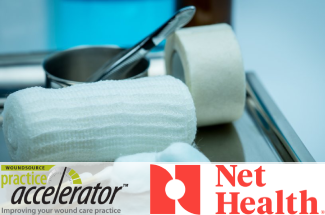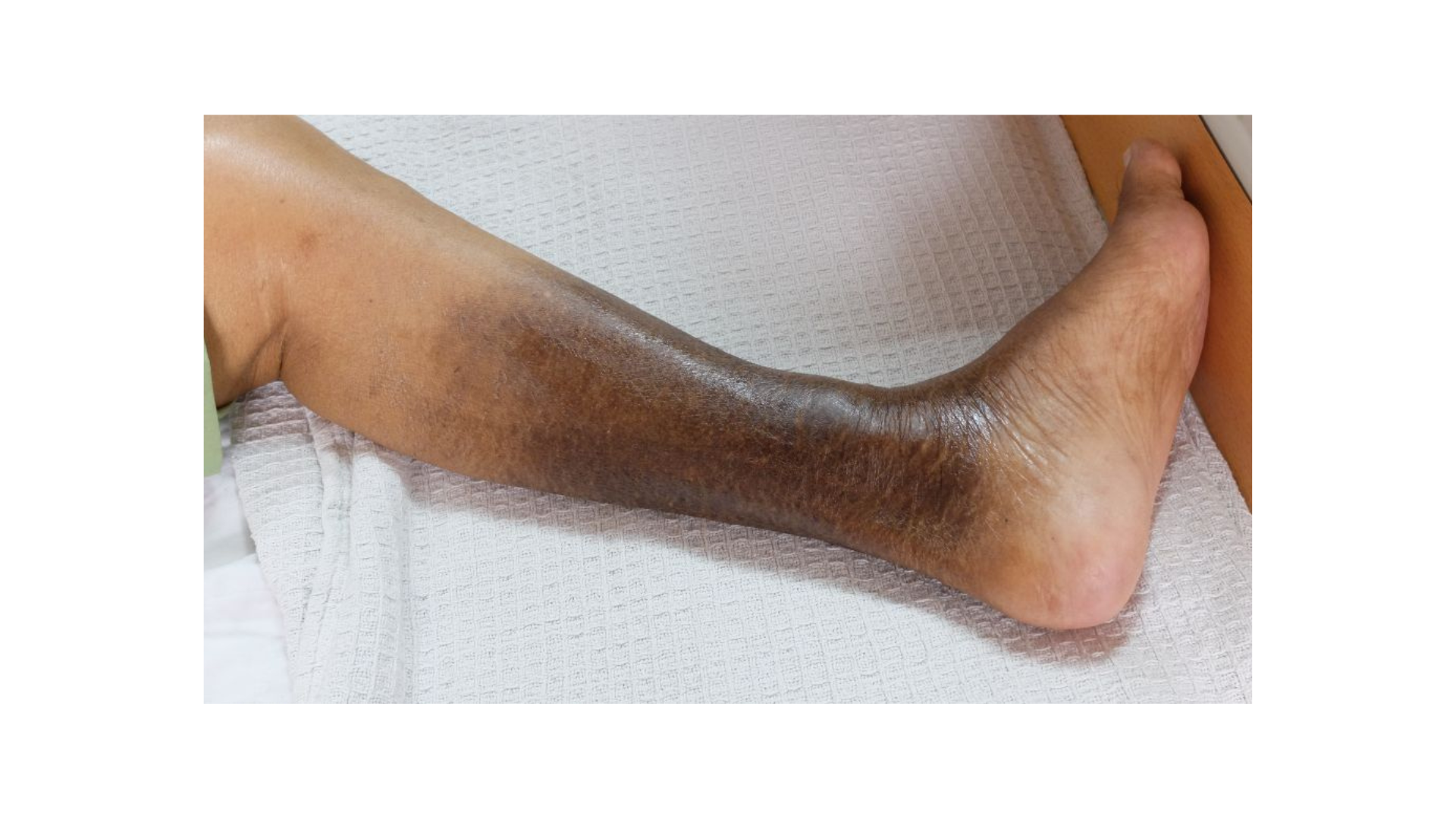What Is Wound Bed Preparation?
June 30, 2022
Introduction
Wound bed preparation is the systematic approach clinicians use to identify and remove barriers to the healing process of the wound. The approach aims to create an optimal wound healing environment by focusing on all critical components, including debridement, bacterial balance, and exudate management, as well as taking into account the patient's overall health status and how this may impinge on the wound healing process.1
Update to TIMERS
In 2018 a consensus panel of wound care experts met to reassess the concept of TIME (tissue, infection/inflammation, moisture balance, and edge of wound/epibole) and the advances made in wound care practices, technology, and patient care. The TIME method was updated to TIMERS, by adding repair or tissue regeneration (R) and the often overlooked social factors (S) to chronic or slow-healing wounds.
Suggestions for biofilm prevention and management were raised, along with their correlation with nonhealing chronic wounds and the concept that treating biofilm would push the wound toward an optimal healing state.2 The TIMERS framework conducts a holistic patient assessment and diagnostic investigations to identify all the risk factors associated with the wound and the patient.3
How much do you know about wound bed preparation? Take our 10-question quiz to find out! Click here.
Tissue Management
Tissue management focuses on the viability of tissues within the wound bed. If clinical observation confirms the presence of nonviable, necrotic, or infected tissue that impedes the healing process, debridement is recommended to eliminate nonviable tissue. The objectives of wound bed debridement are to remove necrotic tissue and debris, stimulate the wound, inspect underlying tissue, remove exudates, and promote healing. Debridement methods include:
- Autolytic
- Enzymatic
- Biological (larval debridement)
- Sharp or surgical
- Mechanical debridement
Debridement methods need to be assessed for the patient's health, wound care professional's competence, tissue type (slough, necrosis, hard eschar, etc), the presence of biofilm, wound location, the presence of ischemia, and the use of immunosuppressants.3
Inflammation and Infection
An infected wound causes the patient discomfort and pain and delays the healing process. Although emphasis is often placed solely on bacterial burden, host resistance should be factored in when determining risk of infection. This resistance is lowered by poor nutrition and tissue perfusion, smoking, substance use, comorbidities, and medications. Infection treatment should begin with improving host resistance by promoting healthy eating, encouraging smoking cessation, and addressing underlying medical conditions such as diabetes.4 Interventions for controlling inflammation and bioburden include:
- Debridement to remove devitalized tissue
- Wound cleansing with appropriate noncytotoxic wound cleansers
- Use of topical antimicrobials such as dressings impregnated with antimicrobials or antibacterials
- Antibiotics as appropriately indicated for systemic infections
Moisture Balance
To balance the moisture levels of a wound, clinicians should create and maintain a warm, moist wound bed. This environment stimulates components in the wound bed that positively impact healing, such as growth factors. 5 Although maintaining a moist environment is optimal for wound healing, it is a delicate balance. Excessive exudate levels can lead to the maceration of wound edges and tissue degradation. These damaged tissues are thought to promote biofilm formation as a potential nutrient source, so preventing their formation is essential. To ensure an even balance of moisture levels within a wound, utilize dressings that donate moisture to the wound site while absorbing excess drainage. Wound care dressings that can be used for optimal moisture balance include:
- Transparent films: Help retain moisture in the wound bed and allow gaseous exchange while remaining impervious to external fluids and bacteria
- Hydrocolloids: Promote autolytic debridement in dry to medium-draining wounds and aid in infection prevention
- Hydrogels: Add moisture without causing maceration to dry wounds because they are viscous water-based dressings
- Foams: Used to promote healing and management of moderate to heavy exudate levels in partial- or full-thickness wounds
- Alginates: Absorb moderate to heavy exudate to achieve proper moisture balance
- Super absorbent polymer: Absorbs large amounts of fluids in heavily draining wounds without drying out the wound bed
Epithelial Edge
Thorough observation of wound edges and periwound skin is essential to determine whether wound healing is not progressing. The following observations can confirm whether the wound edges are advancing as normal:
- Presence of rolled edges (epibole)
- Advancement of edges
- Callus and/or hyperkeratosis
- Presence of scales, dry skin, eczema, psoriasis, irritation, pruritus, and sensitivity in the periwound skin6
Interventions for nonadvancing edges or for rolled or calloused edges include:
- Debridement of rolled or calloused edges
- Infection management
- Packing tunneling or undermining in the wound
- Periwound management
Regeneration and Repair
Once clinicians are on the step repair and regeneration, clinicians should address hard-to-heal wounds. The goal is to encourage wound closure by providing a matrix to support cell infiltration, stimulating cell activity using signal molecules or growth factors, delivering oxygen therapy, or using stem cells.3 Clinicians should establish whether the wound responds to the standard of care, all patient risk factors should be identified, and critical factors should be addressed, including the underlying infection, disease, presence of biofilm, and patient-related factors. Once risk factors and standard of care address hard-to-heal wounds, advanced therapies can be considered. Advanced Therapies
- Nitric oxide
- Oxygen therapy
- Growth factors
- Sucrose octasulfate
- Tissue equivalents
- Placental-based grafts
- Bioengineered technologies
- Extracellular matrix–based technologies
- Cell-based grafts
Social Factors
As discussed, TIMERS now considers social factors and adds a holistic, whole-patient approach to wound treatment. Patient-centered aspects need to be addressed, such as psychosocial, extrinsic, and physical risk factors for proper wound bed preparation and healing.
Psychosocial Factors
- Mental health and ongoing education can help the patient’s ability to better understand the care plan.
- Patients with dementia should receive social support for self-care.
- The clinician should refrain from the use of medical jargon when explaining care plans to the patient and should deliver clear instructions on the patient’s knowledge level
Physical Factors and Comorbidity
- Physical ability will contribute to the effectiveness of wound healing.
- Lack of mobility will hinder self-care and the ability of a patient to appropriately apply products or dressings and monitor healing status.
Extrinsic Factors
- Extrinsic and living conditions
- Living alone or in social isolation
- Distance from the clinical office
- Economic situation
These factors can affect patients' ability to heal and are essential uncontrollable factors for the clinician to consider when creating a care plan with the patient.
Repeating TIMERS
The TIMERS method of wound bed preparation is not a one-and-done set of steps. Wound care and wound healing are complicated, and wound bed preparation steps may need to be repeated to help the wound progress toward closure. It is vital that wound care clinicians document all care provided and how the wound responds to care. By reviewing these data, clinicians can determine which steps need to be repeated and potential new alternative therapies that can be used in moving the wound toward healing trajectory. Thorough documentation is an important part of the wound healing process and should not be overlooked.
Conclusion
The TIMERS model of wound bed preparation can help guide clinicians systemically through care, and the addition of regeneration and repair and social factors shows an evolution to focus on a more holistic approach of patient care. Clinicians should be sure to conduct each step in the process and to evaluate the wound’s progress towards closure to see which steps need to be repeated. Only through consistent wound bed preparation can healing be achieved.

References
- Schultz GS, Sibbald RG, Falanga V, et al. Wound bed preparation: a systematic approach to wound management. Wound Repair Regen. 2003;11:1-28. doi:10.1046/j.1524-475x.11.s2.1.x
- Rajpaul K. Biofilm in wound care. Br J Community Nurs. 2015;20(suppl 3):S6-S11. doi:10.12968/bjcn.2015.20.Sup3.S6
- Atkin L, Bućko Z, Conde Montero E, et al. Implementing TIMERS: the race against hard-to-heal wounds. J Wound Care. 2019;28(3):1-49. doi:10.12968/jowc.2019.28.Sup3a.S1
- Dowsett C. Using the TIME framework in wound bed preparation. Br J Community Nurs. 2008;13(6):S15-S22. doi:10.12968/bjcn.2008.13.Sup3.29468
- Halim AS, Khoo TL, Saad AZ. Wound bed preparation from a clinical perspective. Indian J Plast Surg. 2012;45(2):193-202. doi:10.4103/0970-0358.101277
- Bishop A. Wound assessment and dressing selection: an overview. Br J Nurs. 2021;30(5):S12-S20. doi:10.12968/bjon.2021.30.5.s12
The views and opinions expressed in this blog are solely those of the author, and do not represent the views of WoundSource, HMP Global, its affiliates, or subsidiary companies.











Follow WoundSource
Tweets by WoundSource